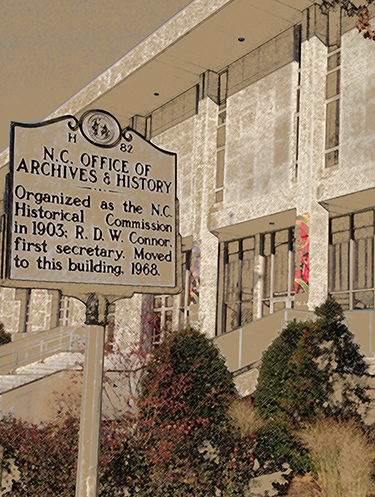The North Carolina General Assembly created America's 400th Anniversary Committee
(AFHAC) in 1973, to plan the celebration of the quadricentennial of the Roanoke Voyages.
Chaired by Dr. H. G. Jones, the original committee consisted of seven men and three
women. The committee included Paul Green, Emma Neal Morrison, William S. Powell, David
Stick, Dr. Herbert R. Paschal, Dr. Frell M. Owl, Elizabeth Van Moore, and Margot E.
Tillitt. From the time of AFHAC's creation, one of Governor Hunt's primary objectives
was to obtain a ship similar to those that the colonists would have sailed on during
their journey from England to Roanoke Island. Governor Hunt hoped this ship could
become one of the cornerstones of the quadricentennial celebration.
Hunt created a ship sub-committee and appointed Charles B. Wade, Jr. as it's chairman.
Wade, a native of Carteret County, was a graduate of Duke University and vice-president
of the R. J. Reynolds Company. According to David Stick's manuscript on AFHAC, the
"ship committee was a one-member operation from start to finish," and that Wade "pursued
the objective with a determination befitting a long time corporate executive." In
February 1979, Wade met with William Avery Baker, a leading architect of period vessels.
Avery concluded that there were no prints or plans of any specific vessel used in
the Roanoke voyages, so a ship similar in size and representative of one in use at
the time would have to be designed and built. Avery recommended three vessels for
use as a model, the 140-ton
Tiger, the 120-ton
Red Lion, and the 50-ton
Elizabeth.
The
Elizabeth, a square rigged, three-masted bark, was chosen as the model. Naval architect Stanley
Potter was hired to design the ship and O. Lie-Nielsen of Rockland, Maine was awarded
the contract to build the vessel. The ship was named the
Elizabeth II and construction began in 1982 on the site of Roanoke Island boat building pioneer
George Washington Creef's old boat works, which had been donated to the town of Manteo
by Creef's heirs. Measuring 69 feet long, 17 feet wide, and drawing eight feet of
water, the
Elizabeth II was launched in November 1983, and is now the centerpiece of Roanoke Island Festival
Park.
